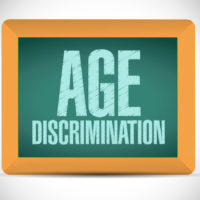Court Finds Employer’s Identifying & Then Eliminating Allegedly Biased Employee As A Decision-Maker Gets Age Discrimination Case To A Jury

In the employment discrimination context, courts have broadly defined a decision-maker as an individual who was involved in or participated in the challenged employment decision. Thus, a decision-maker for an employment decision is not limited to the individual who “pulled the trigger” or ultimately made the decision. Courts have held that an impermissible bias by any individual who was involved in or participated in the challenged employment decision can be used as evidence to prove that discriminatory animus played a role in the decision. As a result, identifying the individuals who constitute the decision-makers for the challenged employment decision is absolutely critical in employment discrimination cases. In Morrow v. Waste Pro of Florida, Inc., 2017 WL 2712938 (S.D. Fla. March 23, 2017), the U.S. District Court for the Southern District of Florida addressed the legal consequences when an employer initially represents that an allegedly biased employee participated in the challenged employment decision and then subsequently changes that representation by claiming that the employee did not participate in the challenged employment decision.
In that case, Susan Morrow (Morrow) alleged that her former employers, Waste Pro of Florida, Inc. and Waste Pro USA, Inc. (Defendants), fired her on the basis of age in violation of the Age Discrimination in Employment Act and the Florida Civil Rights Act. Morrow worked for the Defendants as a customer service representative. The Defendants maintained that Morrow was fired for unprofessional and rude behavior towards customers. During he week that they fired Morrow, the Defendants interviewed an individual twenty-one years younger than Morrow for a customer service representation position. The Defendants hired the individual four days after they terminated Morrow.
The Defendants filed a motion with the trial court seeking dismissal of Morrow’s age discrimination claim. In doing so, the Defendants asked the trial court to find that Morrow’s age discrimination claim failed as a matter of law and Morrow was prohibited from presenting her case to a jury. The trial court denied the Defendants’ motion for dismissal and found that Morrow’s case must decided by a jury.
A threshold issue before the trial court was whether Morrow’s supervisor was involved in the decision to terminate Morrow and, thus, was a decision-maker. In response to a written question from Morrow during the course of the litigation, the Defendants initially identified the supervisor as one of the individuals involved in the decision to fire Morrow. After they filed the motion for dismissal however, the Defendants amended their response and removed any reference to the supervisor as a participant in the decision. The supervisor’s role in the decision to fire Morrow was critical because there was evidence that the supervisor made ageist remarks about Morrow. One employee testified that the supervisor said that Morrow was “too old” and “needs to go.” Another employee testified that he heard the supervisor say that Morrow “need[s] to be at home collecting Social Security” and “what is somebody that age doing here anyway.”
In denying the Defendants’ motion to dismiss Morrow’s age discrimination claim, the trial court explained that an age discrimination claimant is allowed to present her case to the jury when she produces sufficient evidence for a jury to conclude that the employer’s articulated reasons for its decision are not believable. An employer’s shifting explanations for an employee’s discharge, the trial court observed, allow a “jury to question the employer’s credibility.” The trial court found that the Defendants “shifting explanation” regarding the supervisor’s role in the decision to terminate Morrow “calls the credibility of Defendants’ proffered reason [for discharging Morrow] into question.” The trial court also found that because a jury could find that the supervisor “participated in the decision-making process, it could also consider as circumstantial evidence” the ageist remarks the supervisor made about [Morrow] in determining whether Defendants’ proffered reason for firing Morrow was in fact a pretext for age discrimination.
A Decision-Maker’s Biased Remarks Are Evidence Of Discrimination
As Morrow demonstrates, discriminatory remarks by an employee who was involved in or participated in the challenged employment decision are the most compelling evidence of discrimination. Morrow further demonstrates that discriminatory remarks by an employee who was involved in or participated in the challenged employment decision will generally enable the individual claiming discrimination to present his or her case to a jury. Once the case is in front of a jury, a decision-maker’s discriminatory remarks are often sufficient, standing alone, for the jury to find that discriminatory animus played a role in the challenged employment decision.
For these reasons, employers may attempt to airbrush biased employees out of the decision-maker process after a discrimination lawsuit is filed. However, when an employer initially represents that a biased employee participated in the challenged employment decision and then changes that representation by claiming that the employee did not participate in the challenged employment decision, the shifting explanation calls the credibility of the employer’s proffered reasons for the challenged employment decision into question. As Morrow establishes, evidence showing that an employer’s articulated reasons for the challenged employment decision are not believable is often sufficient, standing alone, to enable the individual claiming discrimination to present his or her case to a jury.
Consult With Central Florida Age Discrimination Lawyers
Based in Ocala, Florida and representing employees throughout Central Florida, we have substantial experience representing employees who have been the victim of age discrimination in the workplace. If you have been the victim of age discrimination or have been subjected to derogatory ageist remarks at work, please contact our office for a free consultation with our Ocala based age discrimination attorneys. Our employee rights law firm takes age discrimination cases on a contingency fee basis. This means that there are no attorney’s fees incurred unless there is a recovery and our attorney’s fees come solely from the monetary award that you recover.